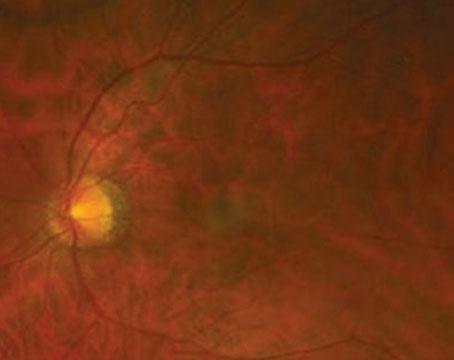Investigators aimed to determine if AMD family history and genetic variants identify eyes at higher risk for progression to advanced AMD (AAMD), after controlling for baseline demographics, behavioral factors and macular status.
The prospective, longitudinal cohort study including eyes with non-advanced AMD at baseline in The Age-Related Eye Disease Study were classified using the AREDS severity scale. Non-genetic and genetic predictors for progression to AAMD, geographic atrophy and neovascular disease were evaluated. Cox proportional hazards models using the eye as the unit of analysis were used to calculate hazard ratios, accounting for correlated data. Discrimination between progressing and non-progressing eyes was assessed using C-statistics and Net Reclassification Improvement (NRI).
Here are some of the findings:
• Among 4,910 eyes, 863 progressed to advanced AMD over 12 years.
• Baseline AMD severity scale and status of the fellow eye were important predictors; genes provided additional discrimination.
• Family history of AMD also independently predicted progression after accounting for genetic and other covariates: one family member vs. none (HR=1.21; CI: 1.02 to 1.43; p=0.03); at least two family members vs. none (HR=1.55; CI: 1.26 to 1.90; p<0.001).
• A composite risk score calculated using beta estimates of non-genetic and significant genetic factors predicted progression to AAMD (HR=5.57, 90th vs. 10th percentile; AUC=0.92), providing superior fit vs. other models with only ocular (NRI=0.34, p<0.001; AUC=0.87) or non-genetic variables (ΔAUC=0.05 ±0.005, p<0.001).
• The study investigators noted that an online risk calculator was available.
Investigators determined that genetic variants and family history provided additional discrimination for advanced age-related macular degeneration prediction, after accounting for ocular and other covariates.
Am J Ophthalmol. 2023 Jul 10:S0002-9394(23)00250-7.
Seddon JM, De D Rosner B.
Risk of Drug-induced Ocular Hypertension After DSEK
Researchers assessed the long-term risk of steroid-induced ocular hypertension and the need for glaucoma treatment with long-term use of topical prednisolone acetate 1% in patients without preexisting glaucoma who underwent Descemet’s stripping endothelial keratoplasty.
The researchers retrospectively reviewed the charts of 211 DSEK patients without previous glaucoma, who underwent the surgery and then used topical prednisolone acetate long-term to prevent graft rejection. Dosing was four times daily for four months and tapered to once daily. The main outcomes were ocular hypertension (defined as intraocular pressure ≥24 mmHg or increase of ≥10 mmHg over baseline) and initiation of glaucoma treatment.
The median patient age was 70 years (range: 34 to 94 years). Here are some of the findings:
• The indications for DSEK were Fuchs’ endothelial dystrophy (88 percent), pseudophakic corneal edema (7 percent), failed DSEK (3 percent) and failed penetrating keratoplasty (2 percent).
• The median follow-up period was seven years (range: 1 to 17 years).
• The cumulative risks of steroid-induced ocular hypertension were:
– at one year, 29 percent;
– at five years, 41 percent; and
– at 10 years, 49 percent.
• The cumulative risks of requiring glaucoma treatment were:
– at one year, 11 percent;
– at five years, 17 percent; and
– at 10 years, 25 percent.
• Among 35 eyes treated for glaucoma, 28 (80 percent) were managed medically and seven (20 percent) had filtration surgery.
The authors concluded that long-term use of topical corticosteroids such as prednisolone acetate 1% added substantial risk of developing steroid-induced ocular hypertension in postop DSEK patients. As a result, they suggested that frequent monitoring of intraocular pressure would be required.
The researchers added that with corneal transplantation, the risk of steroid-induced ocular hypertension can be mitigated by using techniques with a low inherent risk of rejection, such as Descemet’s membrane endothelial keratoplasty, whenever possible, to enable earlier reduction of the corticosteroid’s potency.
Cornea 2023; June 7. [Epub ahead of print].
Price MO, Price DA, Price FW Jr.




